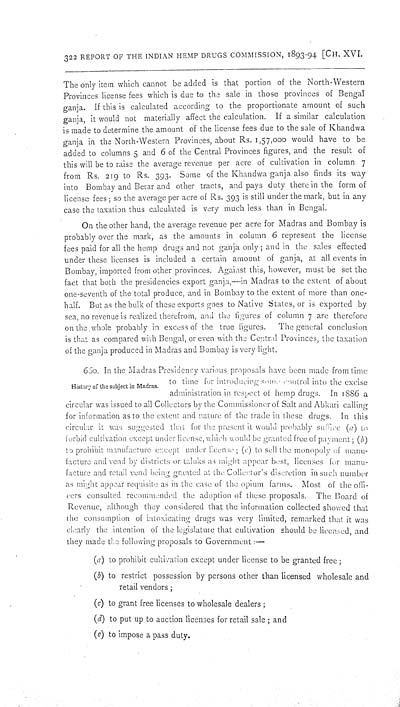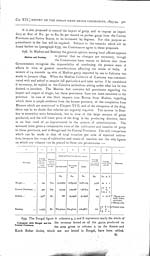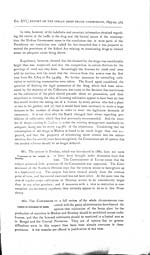Medicine - Drugs > Report of the Indian Hemp Drugs Commission, 1894-1895 > Volume I
(356) Page 322
Download files
Individual page:
Thumbnail gallery: Grid view | List view

322 REPORT OF THE INDIAN HEMP DRUGS COMMISSION, 1893-94 [CH. XVI.
The only item which
cannot be added is that portion of the North-Western
Provinces license fees which is due to the sale in those provinces
of Bengal
ganja. If this is calculated according to the proportionate amount
of such
ganja, it would not materially affect the calculation. If a similar
calculation
is made to determine the amount of the license fees due to the sale
of Khandwa
ganja in the North-Western Provinces, about Rs. 1,57,000 would have
to be
added to columns 5 and 6 of the Central Provinces figures, and the
result of
this will be to raise the average revenue per acre of cultivation
in column 7
from Rs. 219 to Rs. 393. Some of the Khandwa ganja also finds its
way
into Bombay and Berar and other tracts, and pays duty there in the
form of
license fees; so the average per acre of Rs. 393 is still under the
mark, but in any
case the taxation thus calculated is very much less than in
Bengal.
On the other hand, the
average revenue per acre for Madras and Bombay is
probably over the mark, as the amounts in column 6 represent the
license
fees paid for all the hemp drugs and not ganja only; and in the
sales effected
under these licenses is included a certain amount of ganja, at all
events in
Bombay, imported from other provinces. Against this, however, must
be set the
fact that both the presidencies export ganja,—in Madras to the
extent of about
one-seventh of the total produce, and in Bombay to the extent of
more than one-
half. But as the bulk of these exports goes to Native States, or is
exported by
sea, no revenue is realized therefrom, and the figures of column 7
are therefore
on the whole probably in excess of the true figures. The general
conclusion
is that as compared with Bengal, or even with the Central
Provinces, the taxation
of the ganja produced in Madras and Bombay is very
light.
History of the subject in Madras.
660. In the Madras
Presidency various proposals have been made from time
to time for introducing some
control into the excise
administration in respect of hemp drugs. In 1886 a
circular was issued to all Collectors by the Commissioner of Salt
and Abkari calling
for information as to the extent and nature of the trade in these
drugs. In this
circular it was suggested that for the present it would probably
suffice (a) to
forbid cultivation except under license, which would be granted
free of payment; (b)
to prohibit manufacture
except under license; (c) to sell the monopoly of
manu-
facture and vend by districts or taluks as might appear best,
licenses for manu-
facture and retail vend being granted at the Collector's discretion
in such number
as might appear requisite as in the case of the opium farms. Most
of the offi-
cers consulted recommended the adoption of these proposals. The
Board of
Revenue, although they considered that the information collected
showed that
the consumption of intoxicating drugs was very limited, remarked
that it was
clearly the intention of the legislature that cultivation should be
licensed, and
they made the following proposals to Government:—
(a) to prohibit cultivation except under license to be granted free;
(b)
to restrict possession by persons other than licensed wholesale
and
retail vendors;
(c) to grant free licenses to wholesale dealers;
(d) to put up to auction licenses for retail sale; and
(e) to impose a pass duty.
Set display mode to: Large image | Zoom image | Transcription
Images and transcriptions on this page, including medium image downloads, may be used under the Creative Commons Attribution 4.0 International Licence unless otherwise stated. ![]()
| India Papers > Medicine - Drugs > Report of the Indian Hemp Drugs Commission, 1894-1895 > Volume I > (356) Page 322 |
|---|
| Permanent URL | https://digital.nls.uk/74574778 |
|---|---|
| Description | Chapter XVI, cont. |
| Description | [Volume 1]: Report. |
|---|---|
| Attribution and copyright: |
|




